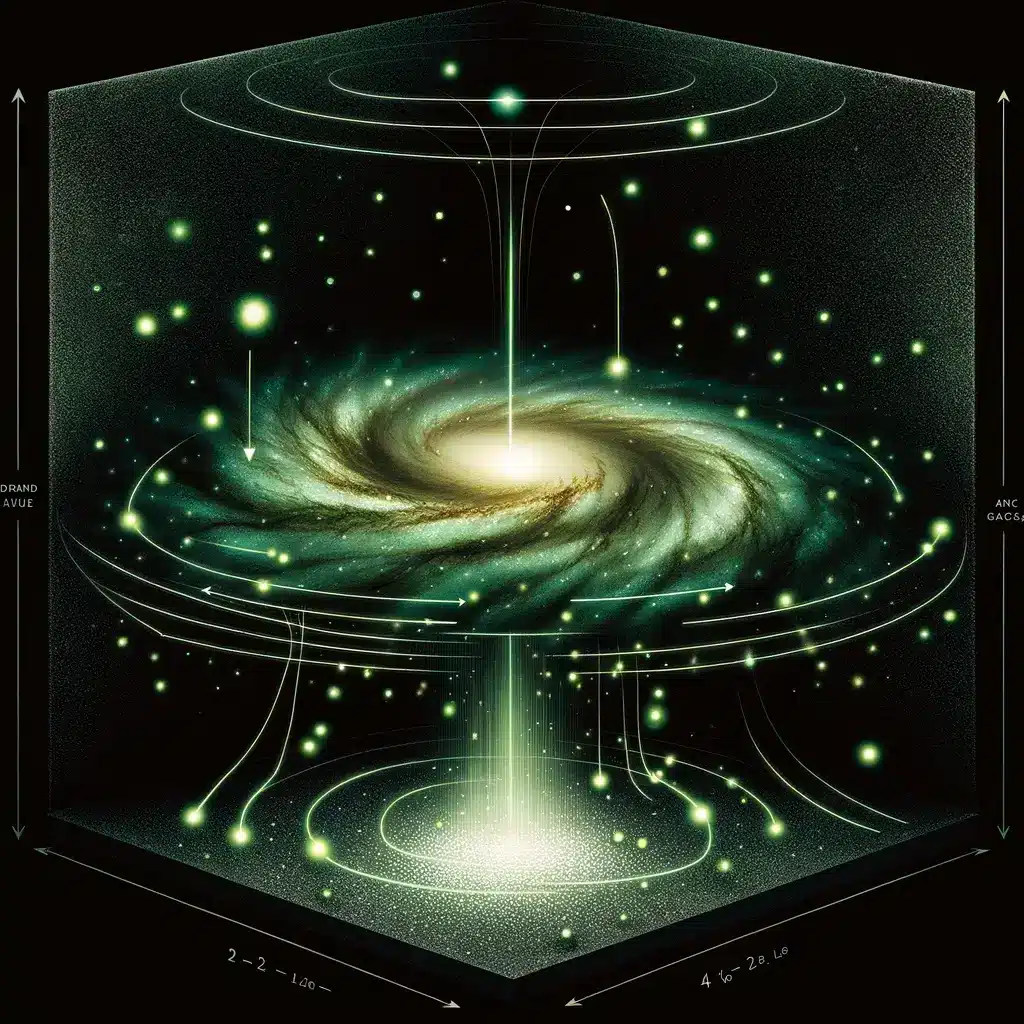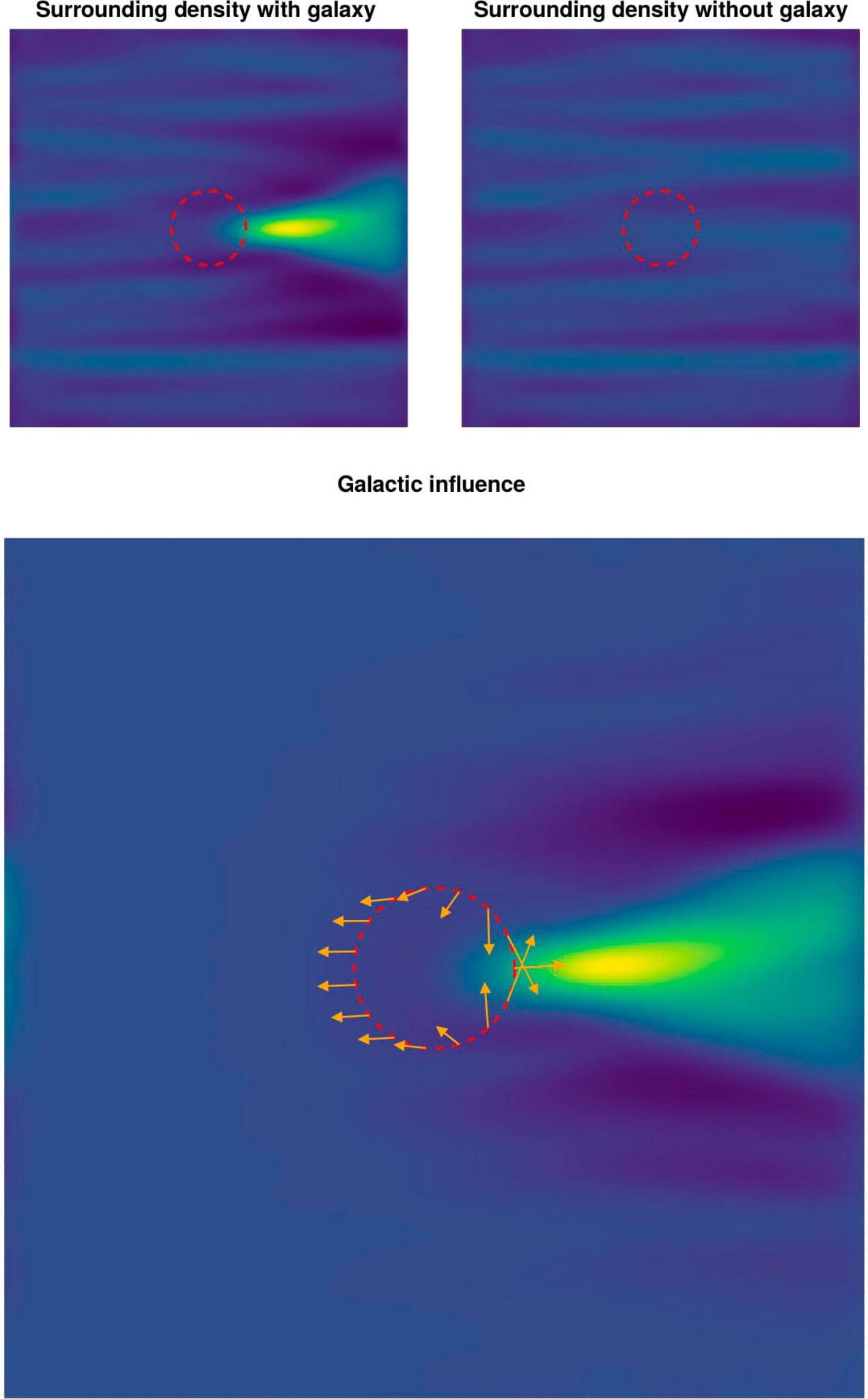Researchers measure the speed and mass of dark matter by studying warped galaxies affected by dynamic friction caused by dark matter

How can the speed of dark matter be measured? The prerequisite is to find a galaxy in the universe that moves relative to the dark matter. Since everything in the universe is in motion and there is a great deal of dark matter, it is not difficult to find such galaxies.
Heavy objects, like galaxies, attract matter of all kinds, dark matter and also matter we seem to encounter every day. When dark matter moves across a galaxy, the galaxy begins to pull the dark matter particles towards it. But changing the direction of the speed of the dark matter particles takes time. Before their trajectory curves towards the galaxy, they already manage to pass it.
Therefore, the dark matter particles do not enter the galaxy, but move behind it (see video below). Behind the galaxy, therefore, the density of matter increases, and this causes the galaxy to slow down - a phenomenon called dynamical friction. The strength of the dynamical friction depends on the transit speed of the dark matter particles across the galaxy, i.e. how much time the galaxy has to change the trajectory of the dark matter particles. As the particles move slowly, the density of matter increases closer to the galaxy, causing it to slow down more.

Figure 1. Dynamic friction. The panels show sparse regions of the universe in dark color and dense regions in light color. The panels above show the density around the galaxy if the galaxy's gravity bends (left) or does not bend (right) the orbits of the dark matter particles. The panel below shows the difference between them, or how the galaxy affects the distribution of the dark matter. The arrows represent the acceleration caused by the overdensity behind the galaxy, due to which the friction at the center of the galaxy is reduced. Since pressures have different directions and strengths in different regions, tidal forces manage to change the shape of a galaxy. Credit: Rain Kipper
Let's assume that the galaxy that causes the dynamical friction is not small but large. In this case, the overdensity behind it creates friction of different strength at different points in the galaxy as shown in Figure 1. Because of the difference in friction the galaxy is more curved. We experience a similar change in the shape of the Earth as tidal cycles caused by the Moon's gravity.
The size of the dark matter particles is ultimately irrelevant - their orbit still curves behind the galaxy. If the size of the particles were comparable to the galaxies themselves, the method might not have produced accurate results. But these dark matter models are no longer included.

5 תגובות
More and more it turns out that the more we discover the less we understand. And it also concerns the fields of human evolution. Theories are like sand and there is nothing to eat. It came to rethinking the essence of the formation of the universe.
Again she asked if the dark matter that actually constitutes a majority of matter in space is at least five times. Affects galaxies. After all, its effect is also parallel in a certain way to that of black holes. which are also in a certain way dark.
Because blacks affect and deflect the light and waves that pass through their surroundings. Dark matter certainly does this too and is called dark because it is simply invisible
Let's add the dark energy
And of course in general the dark matter together with the dark energy make up 95 percent of the location known to us.
And as by energy in a certain way we are able to produce electro magnetic waves and in general a light wave at different frequencies.
So there are two issues being created here
One is a deflection of light created by the repulsion or attraction of dark matter.
Because we have no evidence of how much, how and exactly where the dark matter is in the universe. It follows that the light that reaches us from distances of several light years
There is a deviation from 5 percent to even 95 percent and we have no proof that this does not happen.
It follows that in general a galaxy or a star that seems to us to be located in a certain place in the universe is not there at all
And as long as the distance is greater, the deviation will inevitably be greater
It may even be that light comes to us, twisting like a snake due to the mishaps of dark matter.
Furthermore, the dark energy can definitely affect the wavelength that reaches us.
It turns out that wavelengths coming from the stars or galaxies are not the same wavelengths that leave.
Therefore, two problems arise from this, one is a true and correct location that we have no way of really knowing
Even if we choose two points or even ten points depending on the light coming to us from some heavenly body
Due to the process of distorting light rays we have no ability to verify if any deviation has been made
On the way or not.
Second, the changing wavelengths also give us data that is probably clearly inaccurate.
This includes the materials the distant star is made of and even its correct size.
I will shorten accordingly
The conclusions derived from the examination of when the big bang began
There is no obligation at all that the bang was indeed 13.4 billion years ago
It could be that the time is much shorter than what was assumed as stated in another article and there is even a scientist who says that the wave of the universe is 2 years longer than what is assumed or something like that.
I will shorten the more you discover, the more the bang theory consumes more and more struts and crutches to keep it standing
Stop the world, I want to get off.
Less interesting is what the dark matter is doing thousands of light years away. Do you have a plan to get there??
There is no dark matter.
Like they thought there was a site when they couldn't explain
Is dark matter another universe that attracts and accelerates the universe we are in???